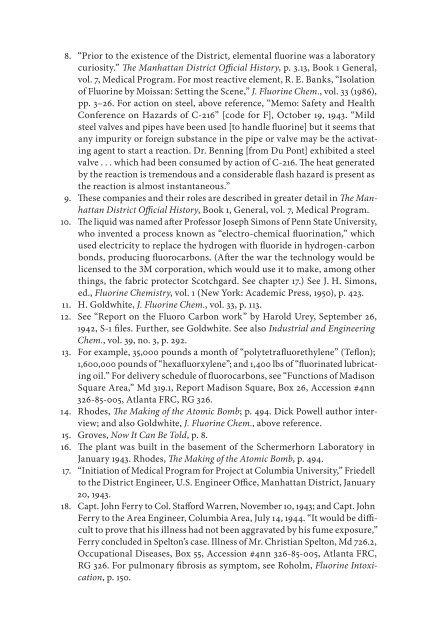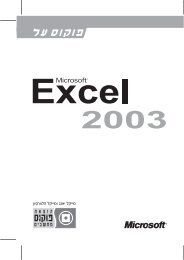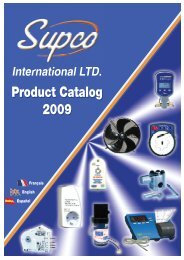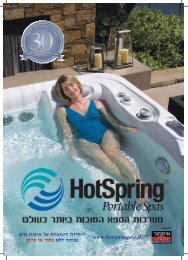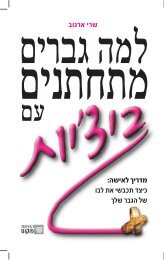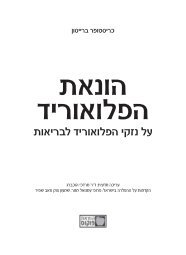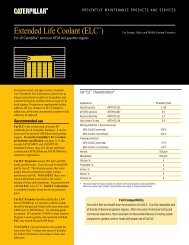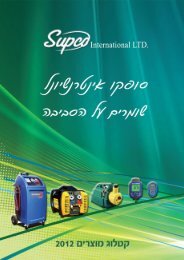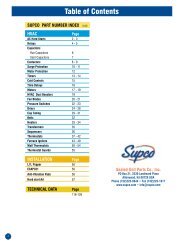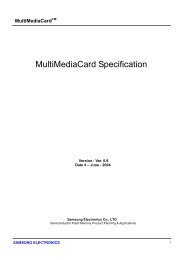Epigraphs Note on Terminology Acknowledgments Introduction
Epigraphs Note on Terminology Acknowledgments Introduction
Epigraphs Note on Terminology Acknowledgments Introduction
You also want an ePaper? Increase the reach of your titles
YUMPU automatically turns print PDFs into web optimized ePapers that Google loves.
8. “Prior to the existence of the District, elemental fluorine was a laboratory<br />
curiosity.” The Manhattan District Official History, p. 3.13, Book 1 General,<br />
vol. 7, Medical Program. For most reactive element, R. E. Banks, “Isolati<strong>on</strong><br />
of Fluorine by Moissan: Setting the Scene,” J. Fluorine Chem., vol. 33 (1986),<br />
pp. 3–26. For acti<strong>on</strong> <strong>on</strong> steel, above reference, “Memo: Safety and Health<br />
C<strong>on</strong>ference <strong>on</strong> Hazards of C-216” [code for F], October 19, 1943. “Mild<br />
steel valves and pipes have been used [to handle fluorine] but it seems that<br />
any impurity or foreign substance in the pipe or valve may be the activating<br />
agent to start a reacti<strong>on</strong>. Dr. Benning [from Du P<strong>on</strong>t] exhibited a steel<br />
valve . . . which had been c<strong>on</strong>sumed by acti<strong>on</strong> of C-216. The heat generated<br />
by the reacti<strong>on</strong> is tremendous and a c<strong>on</strong>siderable flash hazard is present as<br />
the reacti<strong>on</strong> is almost instantaneous.”<br />
9. These companies and their roles are described in greater detail in The Manhattan<br />
District Official History, Book 1, General, vol. 7, Medical Program.<br />
10. The liquid was named after Professor Joseph Sim<strong>on</strong>s of Penn State University,<br />
who invented a process known as “electro-chemical fluorinati<strong>on</strong>,” which<br />
used electricity to replace the hydrogen with fluoride in hydrogen-carb<strong>on</strong><br />
b<strong>on</strong>ds, producing fluorocarb<strong>on</strong>s. (After the war the technology would be<br />
licensed to the 3M corporati<strong>on</strong>, which would use it to make, am<strong>on</strong>g other<br />
things, the fabric protector Scotchgard. See chapter 17.) See J. H. Sim<strong>on</strong>s,<br />
ed., Fluorine Chemistry, vol. 1 (New York: Academic Press, 1950), p. 423.<br />
11. H. Goldwhite, J. Fluorine Chem., vol. 33, p. 113.<br />
12. See “Report <strong>on</strong> the Fluoro Carb<strong>on</strong> work” by Harold Urey, September 26,<br />
1942, S-1 files. Further, see Goldwhite. See also Industrial and Engineering<br />
Chem., vol. 39, no. 3, p. 292.<br />
13. For example, 35,000 pounds a m<strong>on</strong>th of “polytetrafluorethylene” (Tefl<strong>on</strong>);<br />
1,600,000 pounds of “hexafluorxylene”; and 1,400 lbs of “fluorinated lubricating<br />
oil.” For delivery schedule of fluorocarb<strong>on</strong>s, see “Functi<strong>on</strong>s of Madis<strong>on</strong><br />
Square Area,” Md 319.1, Report Madis<strong>on</strong> Square, Box 26, Accessi<strong>on</strong> #4nn<br />
326-85-005, Atlanta FRC, RG 326.<br />
14. Rhodes, The Making of the Atomic Bomb; p. 494. Dick Powell author interview;<br />
and also Goldwhite, J. Fluorine Chem., above reference.<br />
15. Groves, Now It Can Be Told, p. 8.<br />
16. The plant was built in the basement of the Schermerhorn Laboratory in<br />
January 1943. Rhodes, The Making of the Atomic Bomb, p. 494.<br />
17. “Initiati<strong>on</strong> of Medical Program for Project at Columbia University,” Friedell<br />
to the District Engineer, U.S. Engineer Office, Manhattan District, January<br />
20, 1943.<br />
18. Capt. John Ferry to Col. Stafford Warren, November 10, 1943; and Capt. John<br />
Ferry to the Area Engineer, Columbia Area, July 14, 1944. “It would be difficult<br />
to prove that his illness had not been aggravated by his fume exposure,”<br />
Ferry c<strong>on</strong>cluded in Spelt<strong>on</strong>’s case. Illness of Mr. Christian Spelt<strong>on</strong>, Md 726.2,<br />
Occupati<strong>on</strong>al Diseases, Box 55, Accessi<strong>on</strong> #4nn 326-85-005, Atlanta FRC,<br />
RG 326. For pulm<strong>on</strong>ary fibrosis as symptom, see Roholm, Fluorine Intoxicati<strong>on</strong>,<br />
p. 150.


